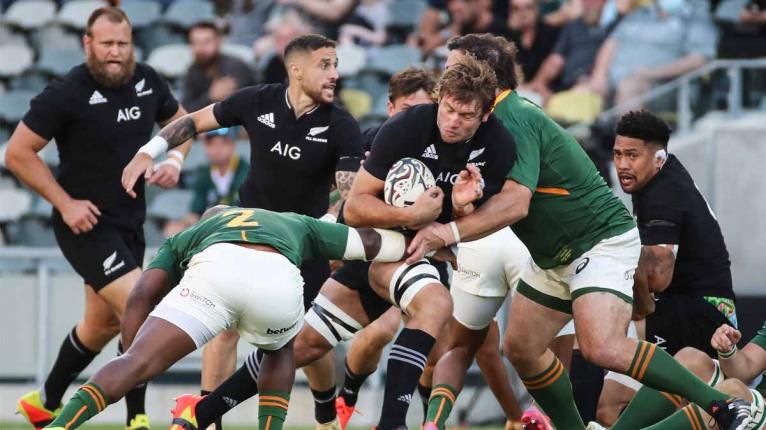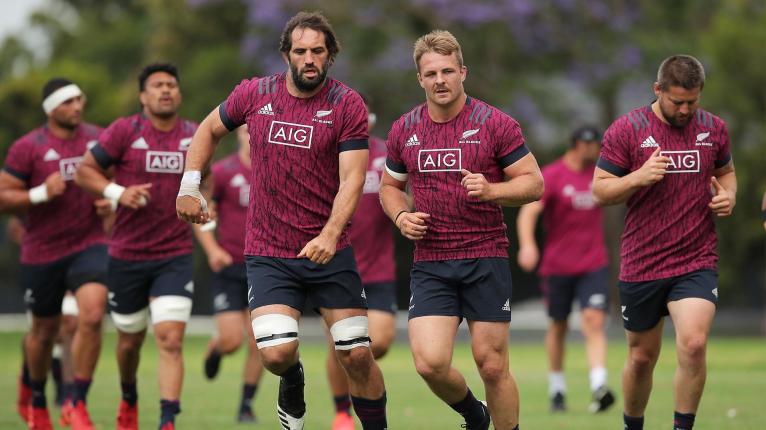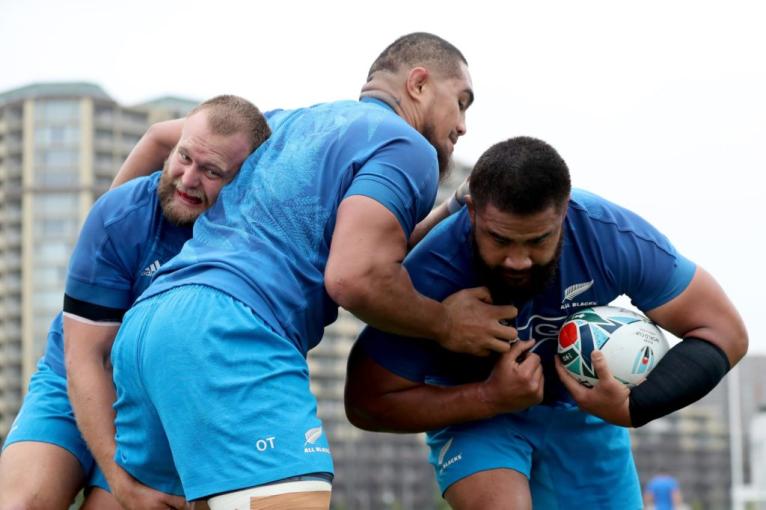At the start of this year, All Blacks coach Ian Foster had two specific goals in mind. The first was to return his team to the top of the world rankings and the second was to increase the number of people in New Zealand genuinely capable of playing test rugby.
The first goal remains a work in progress. After the All Blacks beat Argentina for a second time, they jumped ahead of South Africa to be number one in the world.
But their status there was short-lived as the Boks bounced back to number one after they defeated the All Blacks on the Gold Coast. With five tests remaining this year, the All Blacks would likely consider they achieved their goal, regardless of where they end up sitting on the world rankings, if they win them all.
If they can finish the season with 14 wins from 15 tests in a schedule that saw them take on Australia three times, South Africa twice as well as Wales, Ireland and France it would be an incredible statement of how well they are playing.
Probably, even if they can win four of their next five – given the length of time they have already been away from home and the difficulties they have encountered with quarantine and travel restrictions – Foster would be highly satisfied.

As for the second goal of deepening the talent pool, that’s a job already well done even before another new face, Josh Lord, joins the team in the USA.
Depth is not an issue for the All Blacks. This year has been transformational in that regard as a host of players have taken giant leaps forward.
Across the positional board they have discovered new players or seen some who came into the test environment last year develop faster than anticipated.
The big movers this year have been Samisoni Taukei’aho, Ethan Blackadder, Brad Weber, Jordie Barrett and Sevu Reece.
All of them have delivered compelling test contributions be it sporadically or in some cases, consistently. Brodie Retallick has returned to the fold after missing all of 2020 and Rieko Ioane has surged back to his best form, which is almost true of Beauden Barrett as well.
It’s nice to see one of your key leaders in form and determined to get better.
Ian Foster on Beauden Barrett
After being forced to play fullback in 2019 and 2020 – two years in which he was also suffering from a nagging Achilles injury that was maybe just robbing him of his confidence – he returned to the No 10 jersey in the Rugby Championship and played with enough poise and effectiveness to suggest he’s still a real force.
“He’s going good,” Foster told media about Barrett after the 31-29 loss to South Africa. “I think he’s a bit more freed up with his Achilles. I think it dampened him a little bit for a couple of years, even though it was close to being right.
“It just looks a lot freer, his movements… his leadership off the park has been very, very strong in this campaign. I’m really pleased for him. He’s one of those guys who will continue to get better, too.
“It’s nice to see one of your key leaders in form and determined to get better.”
This strength in depth was a critical factor in the All Blacks winning the Rugby Championship. The way Covid impacted created a horror schedule for everyone – landing the All Blacks with five consecutive tests in five weeks.
They were, of course, further impacted by quarantine arrangements in New Zealand which meant they were in Australia without key players Sam Cane, Sam Whitelock, Aaron Smith, Richie Mo’unga and Dane Coles.

The fact that four of those five will be joining the tour – as well as the uncapped Lord and Shannon Frizell – will give the squad the fresh legs and burst of energy they need. The arrival of Whitelock and Lord also allows the squad to farewell Scott Barrett and Patrick Tuipulotu who are returning to New Zealand for personal reasons.
Given the schedule – which will see the All Blacks play another five tests in five consecutive weeks against USA, Wales, Italy, Ireland and France and the difficulties moving players around the world, the All Blacks will continue to rotate and refresh their squad while in Europe,
This year has been one of the longest and toughest for the All Blacks in modern history – 15 tests, 10 of which have been on the road in a continuous block and Foster has juggled his resources astutely.
He was up front about the need to strategise selections in the Rugby Championship – to go into the second test against Argentina with a much-changed team to give the front-liners a rest ahead of playing the Boks.
He’s been careful to say that the All Blacks have to think about how to approach individual battles as part of a wider campaign to win the war.
Everyone has known this year that they will get some game time, have a role to play given the volume and frequency of tests. But next year, it will be harder for Foster to offer those certainties and keep fringe players hungry and interested.
The question, though, that is starting to loom is how things might change next year when it’s probable travel restrictions will ease, schedules will return to normal and the All Blacks will work with a smaller squad?
The squeeze is going to come on next year and some good players are not only going to have to be jettisoned from the wider squad, even better ones are going to be disappointed on a more regular basis when decisions have to be made about the matchday 23.
So far, Foster has not had to constantly manage disappointed players. Everyone has known this year that they will get some game time, have a role to play given the volume and frequency of tests. But next year, it will be harder for Foster to offer those certainties and keep fringe players hungry and interested.
The front-row is arguably the most extreme example of accelerated resource development. The All Blacks now have eight capped props – eight men in Joe Moody, Nepo Laulala, Karl Tu’inukuafe, Ofa Tuungafasi, George Bower, Angus Ta’avao, Ethan de Groot and Tyrel Lomax who all appeared in tests this year. They also have Atu Moli returning from a long-term injury with Tasman.
It would seem, with evidential justification, that Joe Moody and Nepo Laulala are the respective number ones at loosehead and tighthead. The tests against South Africa were telling in terms of what they revealed about the All Blacks scrum.
When Moody and Laulala were on, the scrum held steady. When they went off the scrum wasn’t so steady to the point that the last few in the second test were catastrophic for the All Blacks.

Tu’inukuafe has made a notable impact at set-piece whenever he has played this year and his work around the loose has been better than it was last year. He appears to be the next strongest loosehead behind Moody but the pecking order after that becomes hard to guess.
And that is the story throughout the squad. The All Blacks are about to welcome Dane Coles back after the veteran missed the Rugby Championship with a calf injury.
He’ll need to deliver because the two younger hookers in the squad – Taukei’aho and Asafo Auma have shown plenty of promise.
There will be a squeeze at lock, too, as Retallick, Whitelock, Barrett, Tuipulotu and Tupou Vaa’i probably won’t all be carried next year. Four of them yes, five of them, unlikely.
And the criteria to survive the cull seems straightforward – deliver at set-piece and work harder around the field.
At halfback, the focus will be on passing accuracy – an area that still seems problematic for everyone but Aaron Smith. Weber, TJ Perenara and Finlay Christie will all need to demonstrate an integrity of passing technique.
The tests against South Africa showed that the All Blacks set-piece has plenty of work to do. They are not yet a good enough scrummaging or lineout team to consistently beat the best and Foster will no doubt favour those who deliver in those areas in next year’s Super Rugby.
Competition is just as intense in the loose forwards. Once Sam Cane is back and match-fit, the All Blacks will have to make tough choices as they won’t be able to keep all of Cane, Savea, Blackadder, Ioane, Dalton Papali’i, Luke Jacobsen, Hoskins Sotutu and Frizell.
Work rate, ball carrying impact, lineout contribution and accuracy at the breakdown will be the factors that Foster will have his eye on 2021.
At halfback, the focus will be on passing accuracy – an area that still seems problematic for everyone but Aaron Smith. Weber, TJ Perenara and Finlay Christie will all need to demonstrate an integrity of passing technique.
Perenara may be the one to suffer when four becomes three because for all his brilliance in other areas, the basic art of passing well continues to be a problem.
Jack Goodhue will return to action next year and force yet more questions to be asked about the make-up of the midfield where Havili’s lack of experience in the No 12 role was exposed by the Boks.

Quinn Tupaea, infrequently used this year after sneaking into the squad as a surprise choice, showed enough to suggest he could be the long-term answer at second five. A partnership with Goodhue would potentially provide the balance the midfield needs.
The other player to keep an eye on next year is Braydon Ennor, whose opportunities this year were limited by the lack of game time he managed in Super Rugby.
And then there is the back three where it seems that Damian McKenzie could be the one who misses out on a regular place in the matchday 23 next year.
He and Mo’unga were on the bench against the Boks in the second test, but that seems unlikely to be a long-term option for the All Blacks. Probably only two of McKenzie, Beauden Barrett and Mo’unga can be in the 23 and with Jordie Barrett having proven to be invaluable, the former seems destined to be the one to miss out.
What Foster has said about his options to date, is: “It’s almost been a year to really pick on the form that we’re seeing each week, and within the camp,” he says. “So have I got a top 15? I think the answer is yes but we are still likely to utilise the squad largely through this next block.
“Certainly, when you look at the build-up of three tests [USA, Wales, Italy] leading into the last two of Ireland and France, I think we’ve got to keep maximising that energy and the growth of the squad, but in the end maybe target those last two tests, as ones that we really incentivise players’ form for selection.”
What he’s saying is that by the end of this season, he’ll have a better idea who is going to be in his plans longer term and who won’t be.


Comments
Join free and tell us what you really think!
Sign up for free